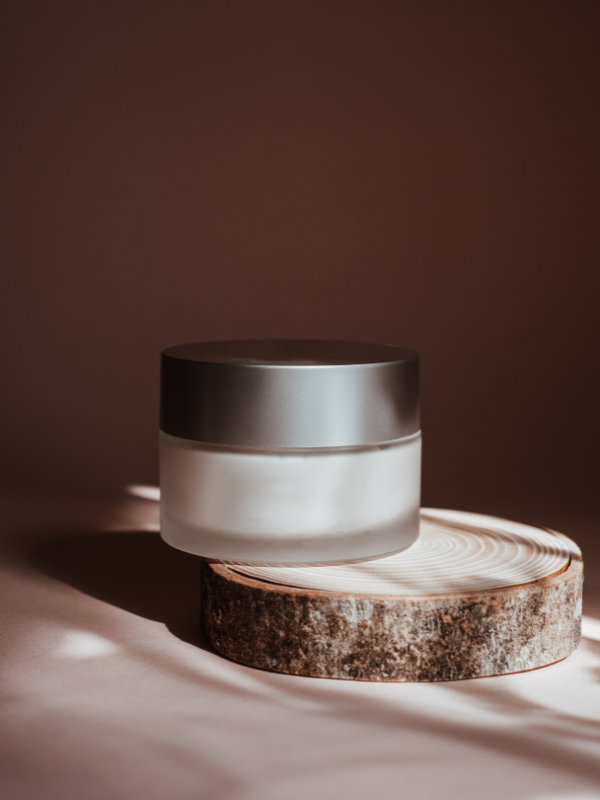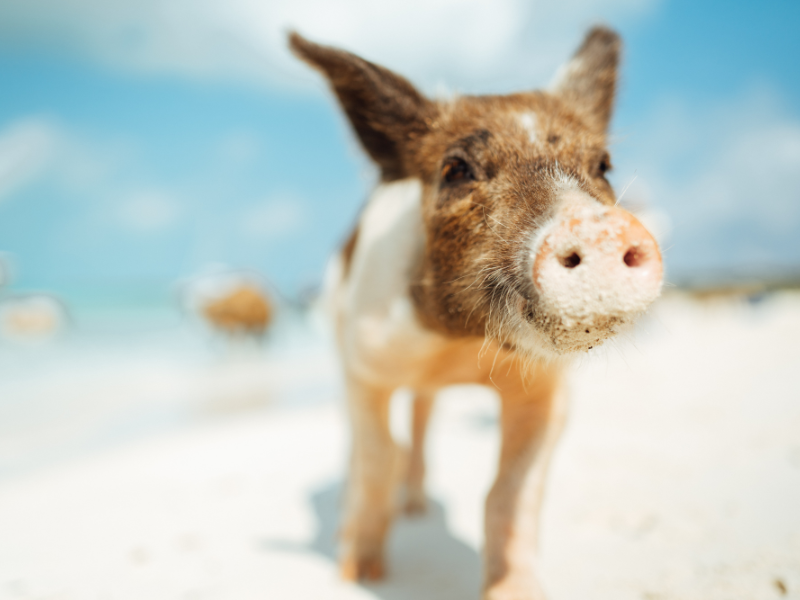The concept of vegan and cruelty-free in beauty products
The terms vegan beauty can be quite confusing. For example, "cruelty-free" products (eng. cruelty-free), and "vegan" (vegan) products do not have the same meaning, and many assume that they are one and the same.
Vegan beauty means the absence of animal ingredients in the product, while the term "cruelty-free" refers to a product that has not been tested on animals. In other words, it is possible that a vegan product has been tested on animals. Likewise, it is possible for a cruelty-free product to contain animal ingredients. Therefore, it is important to understand both terms and to be well informed when choosing a product to buy.
Here is 6 simple steps How to start the transition to cruelty free cosmetics?
Beauty product ingredients of animal origin
When it comes to beauty products, it is much more difficult to understand whether the product contains animal ingredients or not. Reading the product ingredients on the packaging, we understand almost nothing. Why? Because they are written in a foreign language to us.
You might think that brands have to be clear about animal ingredients in their products, but unfortunately, that's not the case. If they really understood the ingredients in the products, few would want to put them on their skin. Without knowledge, it will be difficult to know whether a product is vegan or not, unless the product has a label from an organization such as PETA.
If you want to know which cosmetics are without animal ingredients, see the article: How to know if cosmetics are vegan? – Learn to recognize products

Possible animal ingredients in your cosmetics:
allantoin
What is that: Uric acids of cows and many other mammals. It can be synthetic.
It can be found in: Lipsticks, lip glosses, lip balms, moisturizers, hand lotions, hair lotions, aftershaves and other skin soothing cosmetics
Derivatives: Alcloxa, Aldioxa
Vegan options: Synthetic or plant-based, eg comfrey root
amber
What is that: An oily substance, or bile secretion from the digestive system, which came out as feces or vomit.
Can be found in: Perfumes as a fixative
Vegan options: Synthetic or herbal fixatives
cysteine/l-cysteine
What is that: Amino acid from hair, which can be from animals, e.g. from horses.
It can be found in: Deodorants, shampoos and hair conditioners, moisturizing creams
Vegan option: Plant sources
civet
What is that: Secretion from a gland in the immediate vicinity of the genital organs of civet cats.
It can be found in: Perfume – serves as a fixative
Derivatives: Zibeth, Zibet, Zibetum
Vegan options: Plants with the scent of musk, labdanum oil - resin from the bush plant (Cistus ladanifer)
elastin
What is that: Proteins found in the connective tissue of oxen neck ligaments and other animal products, including pork and cow ligaments and fish.
It can be found in: Moisturizers, deodorants, hair shampoos and conditioners
Vegan options: Synthetics, proteins from plant tissues
estrogen
What is that: Female hormones from the urine of pregnant mares. It is thought to disrupt hormones and consumption may increase the risk of breast cancer. Other chemicals that have been linked to an increased risk of breast cancer are parabens and phthalates.
It can be found in: Creams, lotions, moisturizers, deodorants, perfumes, birth control pills, and menopause medications
Vegan options: Vegetable emollients. Oral contraceptives and menopausal medications based on synthetic steroids or plant-based ingredients
glycerol
What is that: A by-product of soap production that uses animal or vegetable fat. It can be produced synthetically. Learn more about glycerin in the article: What is Glycerin and Why is it an Ingredient in Every Cosmetic Product?
It can be found in: Cream blushes, powders, moisturizers, facial cleansers and toners, face masks, hand creams, hair shampoos and conditioners, hair sprays and styling products, bath soaps and bath products, shaving creams, toothpaste and mouthwash
Derivatives: Glikol, glicerol, gliceridi, glicerini, glicret-26, poliglicerol Glycol, Glycerol, Glycerides, Glyceryls, Glycreth-26, Polyglycerol
Vegan options: vegetable glycerin (a byproduct of vegetable oil soap), seaweed derivatives

guanine
What is that: a glittering material found in crushed fish scales. The flakes are scraped, soaked in alcohol and then crushed to create a shimmering essence.
It can be found in: Glittering products, eg lipstick, mascara, eye shadow, powder, nail polishes, hair shampoos
Derivatives: Pearl essence
Vegan options: Synthetic imitations of pearls, legumes (plants belonging to the leguminous group
vegetables), aluminum and bronze particles
hyaluronic acid
What is that: Hyaluronic acid is a molecule that is an integral part of the skin, it is produced by the skin itself, it plays an important role in the hydration and regeneration of the skin and keeps it youthful. It is responsible for the action of collagen, it is lost with aging and therefore it can be replaced with creams.
In cosmetics, hyaluronic acid from animals comes from cock's beak.
It can be found in: 'Plumping' lipsticks, mascaras, moisturizers and anti-aging products
Derivatives: Hyaluronan, HA
Vegan options: Synthetic hyaluronic acid, vegetable oils
carmine
What is that: A red pigment that comes from female cochineal beetles that eat cacti in South and Central American countries. When crushed, these insects secrete a red chemical called carminic acid. Carminic acid is then mixed with a calcium salt to create a natural red color called carmine. Learn more about lipstick in the article: What is Carmine in Cosmetics and Where Does it Come From?
It can be found in: Lipsticks, lip glosses, rouge, hair shampoos, red and orange cosmetics, nail polishes
May cause an allergic reaction.
Derivatives: Cochineal, carminic acid. It is often listed as a 'natural' ingredient.
Vegan options: Root of the plant alkanet, beetroot juice
castoreum
What is that: A creamy substance with a strong smell, originally from the genitalia of muskrats and beavers. Glands and secretions are taken from the area between the vulva and anus in the female beaver and the scrotum and anus in the male beaver. It is more often synthetic.
It can be found in: Perfumes as a fixative, incense, hair styling products and bath oils
Derivatives: Castor
Vegan option: Synthetic
keratin
What is that: Proteins obtained from ground horns, hooves, feathers, fins and hair of various animals.
Can be found in: Hair conditioner, shampoos, conditioners, permanent wave solutions and nail products
Vegan options: Keratin does not exist in plants, but the protein can be synthesized in the laboratory - almond oil, soy protein, amla oil, and nettle and rosemary that give hair strength
collagen
What is that: A proteinaceous substance in connective tissue, usually obtained from animal tissue. Extracted from the cells of cows, today it often comes from fish, because it is easily absorbed into our cells. Fish collagen has a lower level for allergic reactions and leads to more efficient collagen synthesis.
It can be found in: Lipstick, mascara, moisturizers
Vegan options: Soy proteins, almond oil, amla oil

lanolin
What is that: Oil glands of sheep. Sheep excrete this fatty substance from their skin to hydrate themselves, the substance is then collected from the wool.
It can be found in: Lipsticks, mascaras, eye shadows and pencils, powders, blushes, facial cleansers and toners, moisturizers, eye creams, sunscreens, shampoos and conditioners, hair styling products, soaps and bath products , baby oils, shaving creams and products, nail polish removers
Derivatives: Aliphatic alcohols, Amerchol L101, Cholesterin, Isopropyl lanolate, Laneth, Lanogen, Lanolin acids, Lanolin alcohols, Lanosterols, Sterols, Triterpene alcohols, Wool grease, Wool wax
Vegan options: Plants and vegetable oils
lecithin
What is that: A waxy substance of animal origin from nerve tissue, blood or milk. It is more often obtained from eggs and soy or prepared synthetically.
It can be found in: Lipsticks, lip glosses, lip balms, mascara, powder, moisturizers, eye creams, hand creams, lotions, soaps, hair shampoos and conditioners
Derivatives: Kolinski bitartrate
Vegan options: Soy lecithin, synthetic
tallow
What is that: Fat obtained by cooking animal tissues. It is generally taken from cows and sheep.
It can be found in: Lipsticks, mascaras, powders, facial cleansers and toners, moisturizers and lotions, shampoos and hair conditioners, nail polishes and products, shaving creams, soaps, candles
Derivatives: Alcohol in tallow, sodium tallow, acid in tallow, amide in tallow, tallow-6, glycerides of tallow, imidazoline in tallow
Vegan options: vegetable tallow, Japanese tallow, paraffin, ceresin
musk
What is that: Oil secretion of male deer. It can also be from beaver, muskrat, civet cat and otter.
It can be found in: Perfumes as a fixative, moisturizing lotions/creams, deodorants, hair conditioners
Derivatives: Ambrettolide, Civetone, Muscone, Exaltolide
Vegan option: Labdanum oil and extracts from other plants with a musky smell, synthetic
oleic acid
What is that: Monounsaturated omega-9 fatty acid, obtained from various animal and vegetable fats and oils. It is usually obtained from inedible tallow fat.
It can be found in: Lipsticks, lip glosses, mascaras, foundations, moisturizers, hair shampoos and wave products, soaps, hand washes, nail polishes, shaving creams and lotions
Derivatives: Oleil Oleate, Oleil Stearate
Vegan options: Vegetable oil, coconut oil
placenta
What is that: It consists of waste matter eliminated with the fetus.
It can be found in: Moisturizing creams and lotions, face masks, anti-wrinkle products, hair shampoos
Derivatives: Placenta polypeptide protein, placenta
Vegan option: ALGAE
retinol
What is that: Vitamin A of animal origin. It can come from fish liver oil (eg shark liver oil), egg yolk or butter, but it can also be plant-based or synthetic.
Can be found in: Moisturizing creams, perfumes, hair dyes, vitamins and supplements
Derivatives: Retinol, carotene, beta-carotene
Vegan options: Lemon grass, wheat germ oil, carotene in carrots, synthetics
squalene
What is that: Shark liver oil.
It can be found in: Moisturizing creams, creams and lotions, hair dyes, in perfumes as a fixative, lipsticks and balms, sun creams
Derivatives: Shark liver oil, Squali Lecur
Vegan options: Vegetable oils (olive oil, wheat germ oil, rice bran oil, etc.)

stearic acid
What is that: When it is of animal origin, it comes from the fat of cows and pigs, fatty acids. It can also come from Loj, and it can also be of plant origin.
Can be found in: powders, moisturizers, deodorants, hand creams and lotions, hairsprays, shampoos and hair conditioners, soaps, shaving creams and candles
Derivatives: Stearamide, Stearamine, Stearati, Stearic Hydrazide, Stearone, Stearoxytrimethylsilane, Stearoyl Lactylic Acid, Stearyl Betaine, Stearyl Imidazoline
Vegan options: Vegetable fats, e.g. coconut, shea butter
shellac
What is that: The resinous secretion of the female lac insect.
It can be found in: Hairspray and other hair styling products, nail polishes. It is also used as a glaze on some jewelry and accessories
Derivatives: Resin glaze, shellac wax (bleached and purified shellac)
Vegan options: Vegetable waxes, Zein (from corn)
gelatin
What is that: Protein obtained by boiling the skin, tendons, ligaments and/or bones of cows and pigs in water.
It can be found in: Moisturizers, face masks, deodorants, perfumes, hair shampoos and conditioners, sunscreens, nail strengtheners
Derivatives: Gel, Monijev klorid Gel, Monium Chloride
Vegan options: Protein from plants, silica gel

